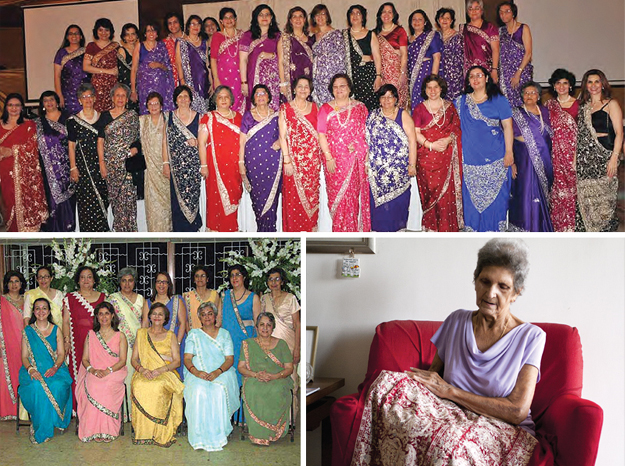
'Parsi' embroidery is probably one of the finest and most beautiful style of embroideries finding a place in the Indian Panorama of arts. Anyone fond of embroidered work is sure to have come across this neat embroidery style with very tasteful motifs and color schemes, which though is a heritage of the Persian community in India, however, is loved across the country and beyond.
Traditionally, Parsi embroideries find their place in 'Parsi Gara', sarees as worn by immigrant Persian ladies having found a solace in the western parts of India in Gujarat, where Persians took up the Indian style of clothing and Gujarati language around 650 AD..
Origin of the Parsi embroidery too can be traced back to this era only, when the immigrant Persian traders traveled to China from India and fell in love with the fine silks of china with their oriental patterns. It was from these trade journeys did the Persian men brought the luxurious silks with oriental patterns and presented first of the Parsi Gara sarees to their women folk, who rejoiced in the luxury and beauty of the bright colours and fine quality of these sarees. These initial sarees and specimens were the source from where Indian artistes got inspiration to make single thread silk embroidered motifs to emulate the oriental finish and motifs.
Parsi embroidery is typically done with white pure silk on dark base fabrics in black, violet, red or dark green. The colorful specimens are usually on off-white and beige bases. Motifs are usually beautiful floral patterns and birds inheriting from Chinese mythologies and a closeness of Persian culture with nature. The commonly found motifs are the ‘Chinaman’ and woman, birds, and a lot of flora and fauna — designs that signify fertility and good omen — there have been transformations with motifs such as kaanda-papeta (onions and potatoes) and chakla-chakli (male and female sparrows).

Eighty-two-year-old Nina Russi Wania inherited a 100-year-old gara. PHOTO: ESSA MALIK/EXPRESS (https://tribune.com.pk/story/564832/wear-it-parsi-style-lady-gara/)
With advent of various dresses and amalgamation of cultures Parsi embroideries can be seen widely on other garments like suits, tops and skirts worn by Parsi community and other communities worldwide. A traditional all over embroidered Parsi Gara can cost anything from Rs. 100,000 to 300,000 however, lighter versions can be found with borders only or machine embroideries sarees in more economical ranges. (Buy online @ https://rangriwaaz.com/collections/parsi-gara)
You may also place your orders for hand embroidered suits and sarees in Parsi Gara using our customization service, where we provide you the most authentic zardosi parsi work in a colour and design of your choice.

Dressed in Garas and Daglis, the Parsis of New York
Though the beauty and the rich heritage makes Parsi embroidery specimens a must have fine fashion article in your wardrobe, the embroidery needs to be revived due to the declining Parsi community and a bent towards 'comfortable clothing'.
This article is a piece of compilation from various resources and you are very welcome to add anything to make it more relevant and complete.

You may buy online @ https://rangriwaaz.com/collections/parsi-gara